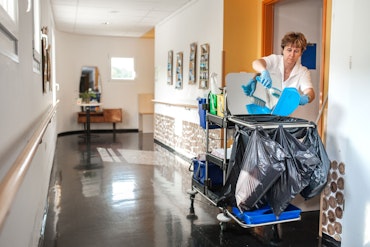Thousands of doctors arriving in Australia could improve healthcare access for rural older Aussies
How rural healthcare could improve for older Aussies with more healthcare professionals arriving in Australia
![<p>Getting appropriate healthcare in rural communities isn’t always easy, but with an influx of healthcare professionals arriving from overseas, this could change for the better. [Source: Shutterstock]</p>](https://agedcareguide-assets.imgix.net/news/articles/wp/doctorchat2506.jpg?fm=pjpg&format=auto&w=550&q=65)
Getting appropriate healthcare in rural communities isn’t always easy, but with an influx of healthcare professionals arriving from overseas, this could change for the better. [Source: Shutterstock]
Key points:
- Almost 35 percent of Australians living in rural and remote areas are over the age of 65 years, according to the Australian Institute of Health and Welfare
- The number of internationally trained doctors arriving in Australia since July 2023 has almost doubled, compared to data in 2019 from the Australian Government
- In the recent Federal Budget, the government allocated $90 million dollars to streamline the processes to allow internationally trained health professionals to work in Australian hospitals and clinics
Getting healthcare in remote areas isn’t always easy but now with an influx of internationally trained doctors, access to healthcare may improve for older Australians.
Australian Government data has indicated that over 42,000 internationally trained health professionals have registered to practice in Australia since July 2022 and this could help ease the Australian healthcare system.
Almost 35 percent of Australians living in rural and remote areas are over the age of 65 years, according to the Australian Institute of Health and Welfare.
Additionally, dying at a younger age is more common for people living in rural areas compared to those living in urban areas, as per data from the Australian Institute of Health and Welfare website.
To combat widespread health workforce shortages, the Australian Government has allocated $90 million dollars in the new Federal Budget to make it ‘simpler and quicker for international health practitioners to work in Australia.’
Minister for Health and Aged Care Mark Butler spoke recently about the incentive for the Australian Government to allocate this funding to support the healthcare system.
“[…] When doctors and nurses come in from overseas, they [can] go straight onto the hospital floor, aged care facility or general practice to deliver health care,” said Mr Butler.
Compared to the 2,991 doctors who registered to work in Australia in the financial year of 2018 – 2019, 4,699 doctors did so in just ten months between July 2023 and April 2024.
Sixty percent of newly registered and internationally trained doctors are from the United Kingdom, Ireland, the Philippines and India, all of which are countries with large English-speaking populations.
In 2022, the National Rural Health Alliance indicated that ‘there are significant workforce shortages in rural Australia, with difficulties in attracting and retaining an appropriately skilled and multidisciplinary aged care workforce.’
However — in addition to doctors — many nurses and other healthcare professionals are arriving in Australia to practise, with a total of 42,086 having registered since July 2022.
Data from the Australian Insitute of Health and Welfare has shown that ‘as people live more remotely, they tend to use more basic support services such as home support assistance under the Commonwealth Home Support Programme.’
Higher levels of support are less likely to be available in rural and remote areas, which may have previously caused some older people to move to more metropolitan areas in Australia.
In major cities, 17 percent of older Australians accessed residential care, compared with less than seven percent in remote areas, as per information available from the Australian Institute of Health and Welfare in 2020.
In one study undertaken by researchers in a rural South Australian community, the older Australian participants responded that they had insufficient access to services for ‘chronic disease management, specialist care, psychological distress, and [that they had] the need for formal care services.’
In this same study, the barriers for accessing this care included ‘workforce shortages, a lack of continuity of care, self-transportation, and long waiting times for appointments.’
However, with an increasing number of health professionals available in Australia, older people living in rural areas may find that delays to access care could be reduced and become much more accessible.
With the current practice regulations, doctors who are trained overseas and want to provide Medicare services to patients must work in rural, regional or remote areas for the first ten years in Australia.
Mr Butler also praised the government’s efforts to make Medicare more accessible as internationally trained healthcare professionals continue to register for practice in Australia.
“[…] This boom in health workers is a vote of confidence in the Australian health system and proves that [the government’s] reforms to strengthen Medicare are working,” said Mr Butler.
“Record numbers of doctors, nurses and other health professionals are moving to Australia and working in the Australian health system.”
Do you live in a rural or remote area in Australia? Have you noticed a difference in the accessibility of the healthcare you receive?
Let the team at Talking Aged Care know on social media.
For more information and news in the aged care industry, subscribe to our free newsletter.
Relevant content:
Bill Shorten attends event in support of the two Australians who die of this disease every day
First-of-its-kind charity launches to support older victims of cybercrime
Up to 94 percent of older Australians aren’t meeting these health recommendations — are you?























